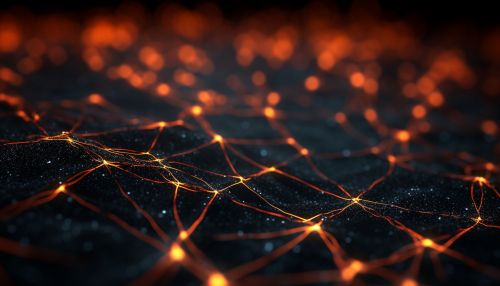Artificial Neural Networks
Introduction
Artificial Neural Networks (ANNs) are computing systems inspired by the biological neural networks that constitute animal brains. These systems learn to perform tasks by considering examples, generally without being programmed with any task-specific rules. ANNs have been central to the development of AI and ML, and they continue to be a subject of intense research and development across various fields.
Structure of Artificial Neural Networks
An ANN is composed of a large number of highly interconnected processing elements, known as neurons, working in unison to solve specific problems. The structure of an ANN is organized into three types of layers: the input layer, hidden layers, and the output layer. Each layer is made up of individual nodes, or neurons, which are connected by 'synapses' that transmit signals between neurons. The strength of these signals is adjusted during the learning process.


Learning in Artificial Neural Networks
The learning process in ANNs involves adjusting the synaptic weights and biases of the network. This is typically achieved through a process called backpropagation, which uses gradient descent to minimize the difference between the actual and desired output. The learning process can be supervised, unsupervised, or semi-supervised, depending on the availability of a desired output for each input in the training data.
Types of Artificial Neural Networks
There are several types of ANNs, each with its unique architecture and specific use cases. Some of the most common types include Feedforward Neural Networks, Radial Basis Function Neural Networks, Multilayer Perceptron, Convolutional Neural Networks, Recurrent Neural Networks, and Long Short-Term Memory Networks.
Applications of Artificial Neural Networks
ANNs have a wide range of applications in various fields such as computer vision, speech recognition, natural language processing, social network filtering, machine translation, bioinformatics, drug design, medical image analysis, and board game programs, among others.
Challenges and Future Directions
Despite their success, ANNs also face several challenges such as the lack of interpretability, the need for large amounts of training data, and vulnerability to adversarial attacks. Future research directions include improving the interpretability of ANNs, developing more efficient training methods, and designing more robust networks.
